What I saw in my recent trip to our neighbor-country, Argentina, caused such an impact that I was eager to add it to my own cultural pocket and share it with you.
Are you already aware of the historical rivalry between Brazilians and Argentineans? Mainly because of soccer, and also because of territorial disputes. We are always making jokes the same way the Argentineans do with us. It is just part of the fun, for we are economic partners in Mercosur and we are part of the same big South American continent. Though we try to reinforce how different we are, and boast about our own national culture, we have much more in common than we want to realize.
I could be here talking about these similarities and our shared socio-cultural background. However, I want to leave my Brazilian side and focus on what makes Argentineans so special. It really stroke me what an amazing country we have just beside us. I’ve gone from Buenos Aires down to the end of the world, Ushuaia – Tierra del Fuego, with a stop in the wonderful deserted area of El Calafate. We experienced the uniqueness of such an extensive country, full of geological and environmental contrasts, a country made of gauchos, Indians, immigrants, a cultural mix that gives a special flavor to the Argentinian ethos.
I was so intrigued and marveled by what I saw that I decided to ask a Brazilian friend (an expatriate living in Buenos Aires) and some Argentinian friends who are part of my online social network about what made Argentineans such a unique people. I wanted them to be demystified and seen as they really were, no touristic perspective, no prejudice, bias or stereotypes. Argentineans by Argentineans.
I was exhilarated when I started reading their answers. It was as if I could put the puzzle pieces together seeing Argentina not with one single eye, but in a multiperspective fashion. Argentina of the mountains and the sea, the asado, chorizo and dulce de leche. Argentina with and without tango, of the contrasting beauty of the young and the old.
I hope you enjoy the ride as much as I did understanding the ethos and uniqueness of these people who are intense, passionate, and straightforward. Here is what my friends told me about Argentineans and what I was lucky to see for myself.
Argentina in a few words
According to my friends, Argentina is:
“a wonderful experience”
(J., my Brazilian friend living in Buenos Aires)
“A country that defies definition, with striking contrasts and contradictions”
(Mary di Mônaco, Rosario, Santa Fé)
“All the landscapes, warm people, many crisis”
(Susana Canelo, Del Valle)
“a country of multiple and beautiful landscapes with the best meat and the friendliest people”
(Maria Laura, Buenos Aires province)
“warm”
(Maria Bossa, Rio Tercero, Córdoba)
“chaotic, but lovely”
(Gonzalo, San Carlos de Bariloche)
“A country of wasted wealth”
(Vicky Saumell, Buenos Aires)
As for what Argentineans cannot live without, J., the Brazilian expatriate, mentioned books, wine, music, dance, art, and free time. My native friends confessed their musts being asado/barbecue, meeting friends, mate, dulce de leche. Friends and asado were unanimous among their passions.
Gastronomy
Because I’ve experienced the exquisite Argentinian food specialties, I wanted to know more about what my friends considered their favorite foods and what was special about it.
J. was mouthwatering and talked about Mollejas a la parrilla and sweetbreads. He said they were delicate and delicious. Mary di Mônaco couldn’t resist those empanadas, “especially the ones prepared in the north of the country, where each province has a typical recipe, all of them incredibly delicious.”
And then, of course, asado, so special probably because of the quality of the meat combined with the way it is cooked”. Susana, Vicky, Gonzalo and Maria Laura agree with Mary, and Maria Laura even adds that “asado‘s amazing taste is not found anywhere else in the world”.
Maria Bossa considers milanesas con papas fritas to be a typical dish, mainly because of her memory of her mom preparing them to the family.
Having Fun
My next question was about entertainment. I had so much fun in Argentina and I couldn’t resist knowing how Argentineans really enjoyed themselves. I wanted to confirm my own perceptions and I was not disappointed to know that they are truly fun-lovers and a people-gathering bunch!
J. likes to go to bars and restaurants to enjoy himself. Mary likes “meeting friends over a meal. It could be in a house or a restaurant, the important thing is to share that time together.” Susana lives in a very small village, so most of time she gathers friends at her house or she goes to their place, but even though she lives 300 km away from Buenos Aires, she takes a weekend there once a month and go to theaters and shows. Maria Bossa also enjoys herself at home drinking mate. Gonzalo points out that he can have fun anywhere, but “mostly at our places, sharing an asado, good food and wine. We also go for walks in the mountains.” Vicky confirms Argentineans’ gregariousness mainly at home, “Gathering for a meal in somebody’s house is a favorite. For men in general, playing or watching football.”
What makes Argentina unique?
I saw so much diversity and incredible places, but I wanted the truth from the roots. So, I asked my friends, “What is unique about Argentina?”
“There are two countries and consequently two “unique” features: the countryside and its agriculture; Buenos Aires and its culture (anthropologically speaking, which means not only books, films, music, but also food, drink, clothing, attitude).” J.
“Its enormous diversity of landscapes, ethnicities, cultures” (Mary)
“Time shared in cafés and bars with friends. Buenos Aires like a cultural city full of nightlife. You can have a bookshop opened late at night ” (Susana)
“The South” (Maria Laura)
“Its warmth” (Maria Bossa)
“Our creativity to live with not enough money. Finding ways of criticizing things, we love complaining about EVERYTHING!” (Gonzalo)
“Our diversity, both geographical and demographic” (Vicky)
Beyond Tango
Just like foreigners think that in Brazil we only have samba, one common belief is that Argentina is about tango. So, here was my question to my friends: Tango – Stereotype or not?
Their answers were frank and somewhat surprising as I thought it would be. Argentina is much more than just Tango.
J. has found out that “there are two ‘tangos’, one for tourists (a ballet), another one, mainly in the suburbs, “where locals really have fun.”
Mary admits that she’s not very much into tango and doesn’t even know how to dance it. However, she gets deeply moved if she happens to hear it abroad or see a couple dancing it in a foreign movie. She finishes by saying that tango is deeply rooted in her culture, more than just a stereotype.
Susana is categorical. Yes, tango is a stereotype, “Young people, especially teens don’t like it. It’s the music from Buenos Aires, and people in the provinces have their own type of music and dances, especially folklore. Piazzola gave tango a kind of international aspect and tango dance shows are more and more popular, but only in Buenos Aires.”
Maria Laura feels the same, saying that there is no tango in her life.
Maria Bossa argues that it all depends on where you live, ” Tango is generally for people from Buenos Aires! In Cordoba, we listen to “CUARTETO” and it’s the best music for parties!”
Gonzalo acquiesces. However, even if it is a stereotype, he says he loves listening to tango because his father was a bandoneon player.
Even Vicky, who comes from Buenos Aires, where tango seems to have its own space, says that “Most people do not like or listen to tango.”
Vacation like a local
I spent wonderful days in Buenos Aires, Ushuaia and El Calafate and kept wondering what was the natives’ favorite destinations, which are generally not the ones foreigners tend to go to.
J. spent his holidays in Ushuaia and El Calafate. However, he said that Argentineans spend their holidays in Mar del Plata, Pinamar, Cariló and in Punta del Este, Uruguay.
Mary, the explorer, said that, just like me, she was fascinated with the South. Last winter holidays, she went to the North (Salta and Jujuy) and she simply fell in love with it – its people, landscapes, music, wines and cuisine. (Check some of her photos in Flickr). For beach holidays, Mary added that “most people choose Mar del Plata, Villa Gesell and other locations on the Atlantic coast. But, honestly, I prefer Brazil for that :-)”.
Susana talked about the beaches on the Atlantic Coast or Bariloche, as well as some hills regions in Buenos Aires province, like Tandil-Sierra de la Ventana.
For Maria Laura, it is the seaside in Buenos Aires or the hills in Córdoba.
Maria Bossa spends vacation in Cordoba hills: Carlos Paz, Embalse, Santa Rosa, Villa General Belgrano. She adds that there are two main places during the holidays: Mar del Plata on the coast (as J. mentioned), and Carlos Paz, in the hills.
Gonzalo agrees with Maria and says that he used to go to Bariloche, as he loves the mountains. However, now that he lives in Bariloche, he is in constant holiday!
Vicky usually goes to different places to know more of her country. She especially likes Córdoba, but she concludes that most Argentineans prefer the seaside.
Well, I guess I’ll have to go back to Argentina to explore more of its seaside and hills now that I know what it is to be an Argentinean and what they consider to be the essential and unifying elements of such a multilayered culture.
J., my friend, is a lucky guy, a Brazilian in Argentina, exploring all its intensity and uniqueness, plus trying all the delicacies we can only have by the Río La Plata. I’d better start packing, heading back to Argentina! Not the tango one, but that of diversity, entertainment, exquisite food and the Argentineans!

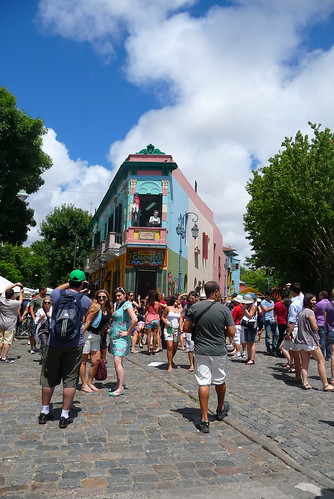
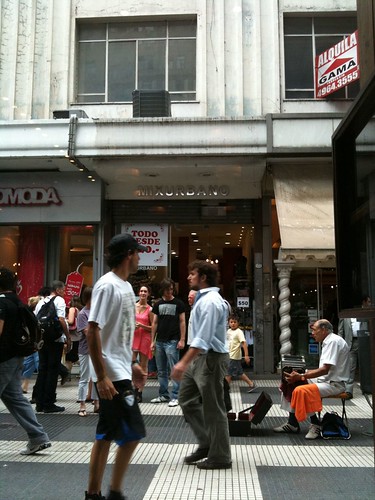
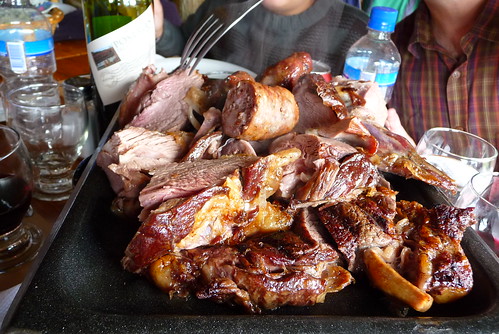
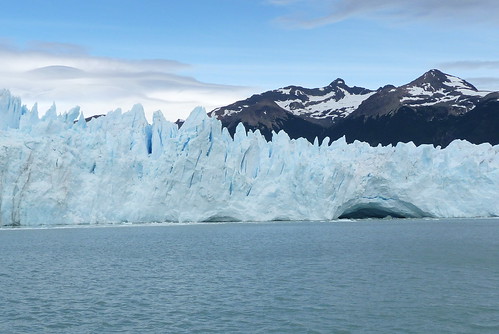


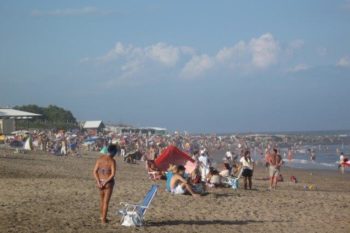
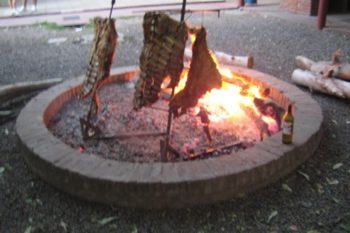

What a wonderful and insightful post. After reading it, I want to pack and go to Argentina! 🙂
Carla, thank you so much for this wonderful post.
Dear Justine, that’s the idea!
Ana, thank you for being such a wonderful Argentinean!
Great post, Carla, I enjoyed reading it very much!
Lovely post, Carla! Quite interesting to see my country through the eyes of a Brazilian and other Argentinians from different regions.
Thank you!
Mary (just back from my hols in … Brazil)
Very nice post, Carla! Love to read it! Thanks for sharing such useful inputs about Argentina!
Dear Sandra, Mary, I’m glad you enjoyed to read about Argentineans through their eyes. Besos.